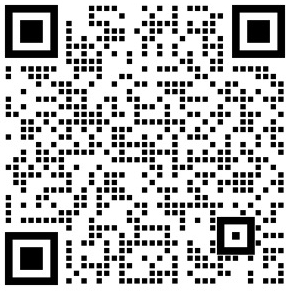首先,请记住:
有胆量你就坚持看完今天的内容,
坚持到最后,文末像每次一样是有福利的。
 Monster MashBobby Boris Pickett - Halloween Fun For Kids
Monster MashBobby Boris Pickett - Halloween Fun For Kids![]()
故事要从10月29日周六晚上说起。
那天晚上,超超老师像每个周末一样加班到了23:30,
然后饿着肚子红着眼睛,抖了抖胸肌,
走出了位于上海市静安区的办公大厦。
超超老师本不是个胆小的蓝孩纸,
但是见到这一幕也是有点怂……
超超老师撞见鬼了,
不,是鬼被超超老师撞见了。
没错,你猜对了,是Halloween狂欢
(carnival狂欢,或者音译为嘉年华)
Carnival的意思不要再叫嘉年华了,
那其实就是各种闹!
从熊孩子们的Trick or treat!
一群打扮成妖魔鬼怪的熊孩子砸你家门,
然后威胁你说:不给糖就烦死你!
Trick or treat?
In Britain and Ireland, the tradition of going house-to-house collecting food at Halloween goes back at least as far as the 16th century, as had the tradition of people wearing costumes at Halloween.
知道各位没心思仔细看,大概说的就是:
挨家挨户要东西这个传统早在16世纪(就是狄仁杰天天问“元芳,你怎么看”的那个年代,也是米开朗琪罗和莎士比亚都很活跃的那个年代)就开始流行,同时也开始流行万圣节的时候集体cosplay(玩costume party),注意专业的说法叫guising(易装)。
In 19th century Britain and Ireland, there are many accounts of people going house-to-house in costume at Halloween, reciting verses in exchange for food, and sometimes warning of misfortune if they were not welcomed. While going house-to-house in costume has remained popular among Scots and Irish, the custom of saying "trick or treat" has only recently become common. The activity is prevalent in the United States, Canada, the United Kingdom, the Republic of Ireland, Puerto Rico, and northwestern and central Mexico.
不过那时候大多数人玩儿的比较讲究,一般是站在门口给你背段圣经。人家背得好,您就给点吃的。也有少数坏蛋是不给吃的就下诅咒(今天pyq的“不转发死全家”看来是由来已久啊……)。
In the latter, this practice is called calaverita (Spanish for "little skull"), and instead of "trick or treat", the children ask meda mi calaverita? ("can you give me my little skull?") where a calaverita is a small skull made of sugar or chocolate.
在墨西哥,熊孩子们敲门要的糖比较碉堡,是酱婶儿的:
如果您觉得上面的还呆萌,那么~
对,没错,这是人家孩子吃的糖~
这玩意儿叫:calaverita~~
来,跟我读:ka-la-ve-Rrrrri-da,重音在Rrrrrri那里,那一串的r,请自行脑补超超老师做大舌弹音的形象。
在这里补充一句,各位小伙伴,等您到了国外赶上这个Halloween,千万别打扮成个贞子或者钟馗就干到邻居家砸门,不是所有的老外都准备了糖果等着您来的,也有相当数量的人家是不欢迎这种的。欢迎的一般会敞开大门,在院子里或者门廊上摆上礼物,不然您还是绕道吧~~
除了要糖,还有最火爆的
Halloween costume parties
基本上就是大家打扮成各种
妖魔鬼怪或者电影人物,
比如:
反正只要不是你自己就行
当然,不能忘了南瓜灯
叫做jack-o'-lanterns
为什么要把南瓜pumpkin搞成这个鬼样子呢?
It is believed that the custom of making jack-o'-lanterns at Halloween began in Ireland. Halloween is also the festival of Samhain and was seen as a time when supernatural beings, and the souls of the dead, roamed the earth. By those who made them, the lanterns were variously said to represent the spirits or supernatural beings, or were used to ward off evil spirits. For example, sometimes they were used by Halloween guisers to frighten people, and sometimes they were set on windowsills to keep harmful spirits out of one's home.
简而言之,这东西最早起源于爱尔兰,当地人觉得万圣节是各种神鬼出没的日子。南瓜灯代表的就是这些神鬼,或者是死去的亡灵。有些人认为这些灯也可以用来驱散邪恶的力量(现在叫“辟邪”好不好!)
除此之外,还会点火
lighting bonfires
咬苹果apple bobbing
Sorry,来张儿版的:
为啥要玩这个呢?
The tradition of bobbing for apples dates back to the Roman invasion of Britain, when the conquering army merged their own celebrations with traditional Celtic festivals. The Romans brought with them the apple tree, a representation of the goddess of fruit trees, Pomona.
When an apple is sliced in half, the seeds form a pentagram-like shape, and it is thought that the manifestation of such a symbol meant that the apple could be used to determine marriages during this time of year. From this belief comes the game bobbing for apples. During the annual celebration, young unmarried people try to bite into an apple floating in water or hanging from a string; the first person to bite into the apple would be the next one to be allowed to marry.
Girls who placed the apple they bobbed under their pillows were said to dream of their future lover.
In Scotland, this may be called "dooking" (i.e., ducking). In northern England, the game is often called apple ducking or duck-apple.
简而言之,就是罗马人入侵不列颠的时候带来了这个玩法。基本上就是认为从水里咬起苹果的未婚男女可以结婚了(有点像今天婚礼上姑娘们抢手捧花的意思)。然后在苏格兰叫ducking,读成dooking(您也知道苏格兰的蜜汁口音),英格兰北部就直接叫apple ducking。
当然,除上述活动之外,也还有其他很多玩的,比如占卜divination games啊,去闹鬼的地方visiting haunted attractions啊,各种恶作剧playing pranks啊,讲鬼故事telling scary stories啊,然后再看个鬼片watching horror films神马的。(老外真是无聊至极……)
为啥老外要有这么个神奇的节日呢?
请搬好小板凳,现在开始科普了:
万圣节是怎么来的?
每年10月31日晚上是西方的Halloween万圣节,其实它是“万圣节前夜(All Hallows’ Evening)”的简称。据说万圣节原本起源于凯尔特人的萨温节(桑海恩节)(Samhain)。对于凯尔特人来说,11月1日这一天是一年的开始,因为那是凯尔特的牧民们把牧群从牧场赶回家的时候,也是土地使用期限重新开始计算的时候。这一天也是凯尔特人最重要和最凶险的节日之一,被称为“死人之日”,或者“鬼节”,类似我们的中元节。
万圣节前夜是一年中最“闹鬼”的时候,各种妖魔鬼怪、海盗、外星来客和巫婆们纷纷出动。在基督纪元以前,凯尔特人在夏末举行仪式感激上苍和太阳的恩惠。当时的占卜者点燃并施巫术以驱赶据说在四周游荡的妖魔鬼怪。后来罗马人用果仁和苹果来庆祝的丰收节与凯尔特人的10月31日融合了。在中世纪,人们穿上动物造型的服饰、戴上可怕的面具是想在万圣节前夜驱赶黑夜中的鬼怪。尽管后来基督教代替了凯尔特人和罗马人的宗教活动,早期的习俗还是保留下来了。孩子们带着开玩笑的心理穿戴上各种服饰和面具参加万圣夜舞会,这些舞会四周的墙上往往悬挂着用纸糊的巫婆、黑猫、鬼怪和尸骨,窗前和门口则吊着龇牙咧嘴或是面目可憎的南瓜灯笼。
万圣节前夕,孩子们会提着南瓜灯,穿着各式各样的稀奇古怪的服装,挨家挨户地去索要糖果,不停地说:“trick or treat”(意思是:“给不给,不给就捣蛋。”)要是你不肯给糖果的话,孩子们就会很生气,用各种方法去惩罚你,例如:把垃圾倒在你家里、把口香糖粘在大门的锁孔里或者把烟囱堵住等等,直到你肯给他们糖果为止。而最古老的传统是:人们会扮成精灵,然后逐家逐户去恳求食物。有人相信要通过给予崇拜和食物来讨好精灵,否则这些精灵就会捉弄人。还有人相信扮成精灵的样子就可以去愚弄或吓跑这些恶灵,这样的话那些恶灵就不会伤害他们。
所以啊,俗话说得好,人吓人,吓死人!
Happy Halloween!
最后送上李超老师“36计战雅思之口语-那么多的为什么”的名师碎碎念课堂,一起来战胜雅思吧!














